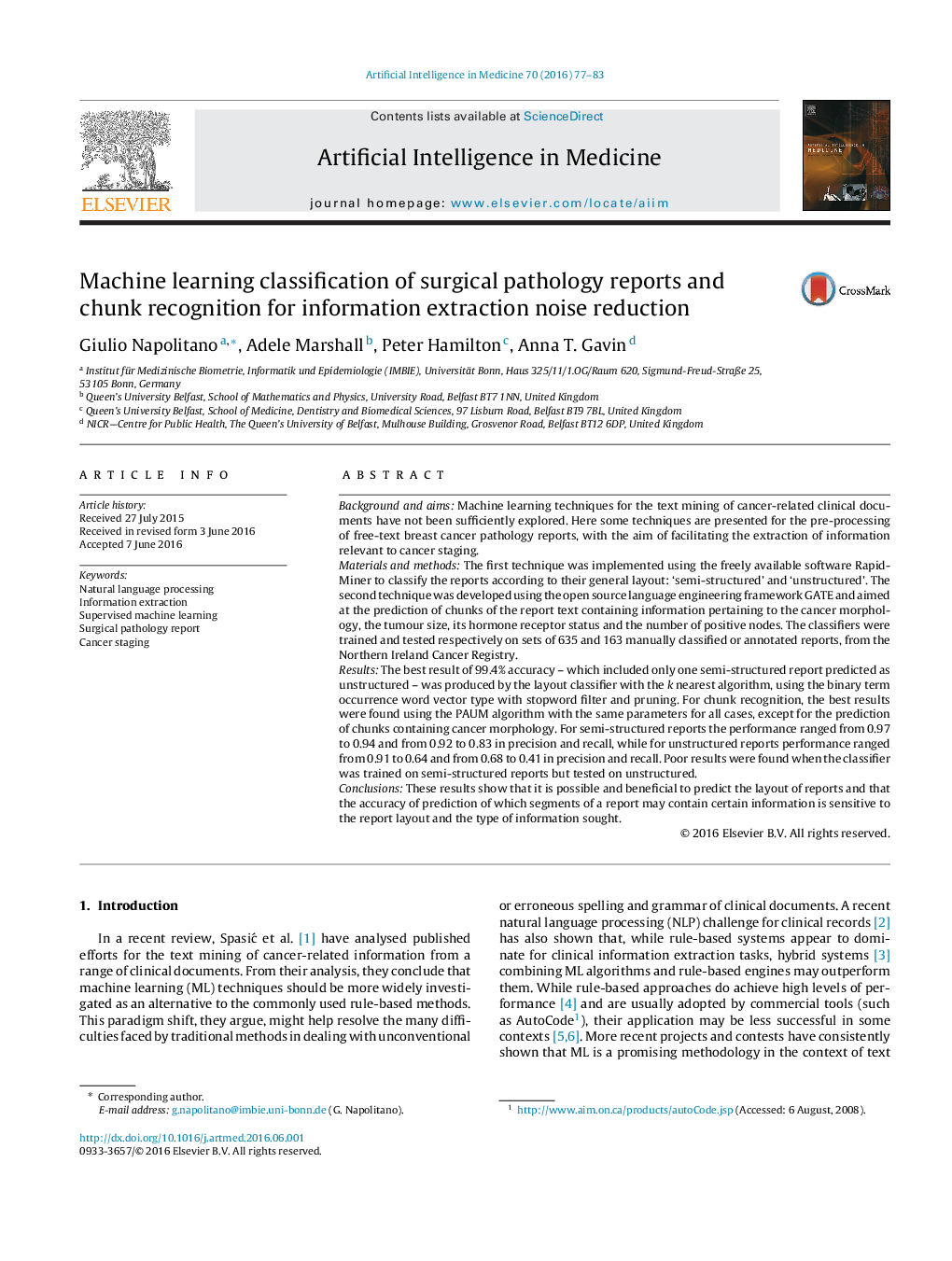| Article ID | Journal | Published Year | Pages | File Type |
|---|---|---|---|---|
| 377544 | Artificial Intelligence in Medicine | 2016 | 7 Pages |
•We employ machine learning to improve text mining of cancer pathology reports.•Machine learning can detect structure in free-text surgical pathology reports.•ML algorithms can locate fragments containing cancer staging information.•These algorithms are sensitive to the degree of structure in the documents.
Background and aimsMachine learning techniques for the text mining of cancer-related clinical documents have not been sufficiently explored. Here some techniques are presented for the pre-processing of free-text breast cancer pathology reports, with the aim of facilitating the extraction of information relevant to cancer staging.Materials and methodsThe first technique was implemented using the freely available software RapidMiner to classify the reports according to their general layout: ‘semi-structured’ and ‘unstructured’. The second technique was developed using the open source language engineering framework GATE and aimed at the prediction of chunks of the report text containing information pertaining to the cancer morphology, the tumour size, its hormone receptor status and the number of positive nodes. The classifiers were trained and tested respectively on sets of 635 and 163 manually classified or annotated reports, from the Northern Ireland Cancer Registry.ResultsThe best result of 99.4% accuracy – which included only one semi-structured report predicted as unstructured – was produced by the layout classifier with the k nearest algorithm, using the binary term occurrence word vector type with stopword filter and pruning. For chunk recognition, the best results were found using the PAUM algorithm with the same parameters for all cases, except for the prediction of chunks containing cancer morphology. For semi-structured reports the performance ranged from 0.97 to 0.94 and from 0.92 to 0.83 in precision and recall, while for unstructured reports performance ranged from 0.91 to 0.64 and from 0.68 to 0.41 in precision and recall. Poor results were found when the classifier was trained on semi-structured reports but tested on unstructured.ConclusionsThese results show that it is possible and beneficial to predict the layout of reports and that the accuracy of prediction of which segments of a report may contain certain information is sensitive to the report layout and the type of information sought.
Graphical abstractFigure optionsDownload full-size imageDownload high-quality image (114 K)Download as PowerPoint slide
